
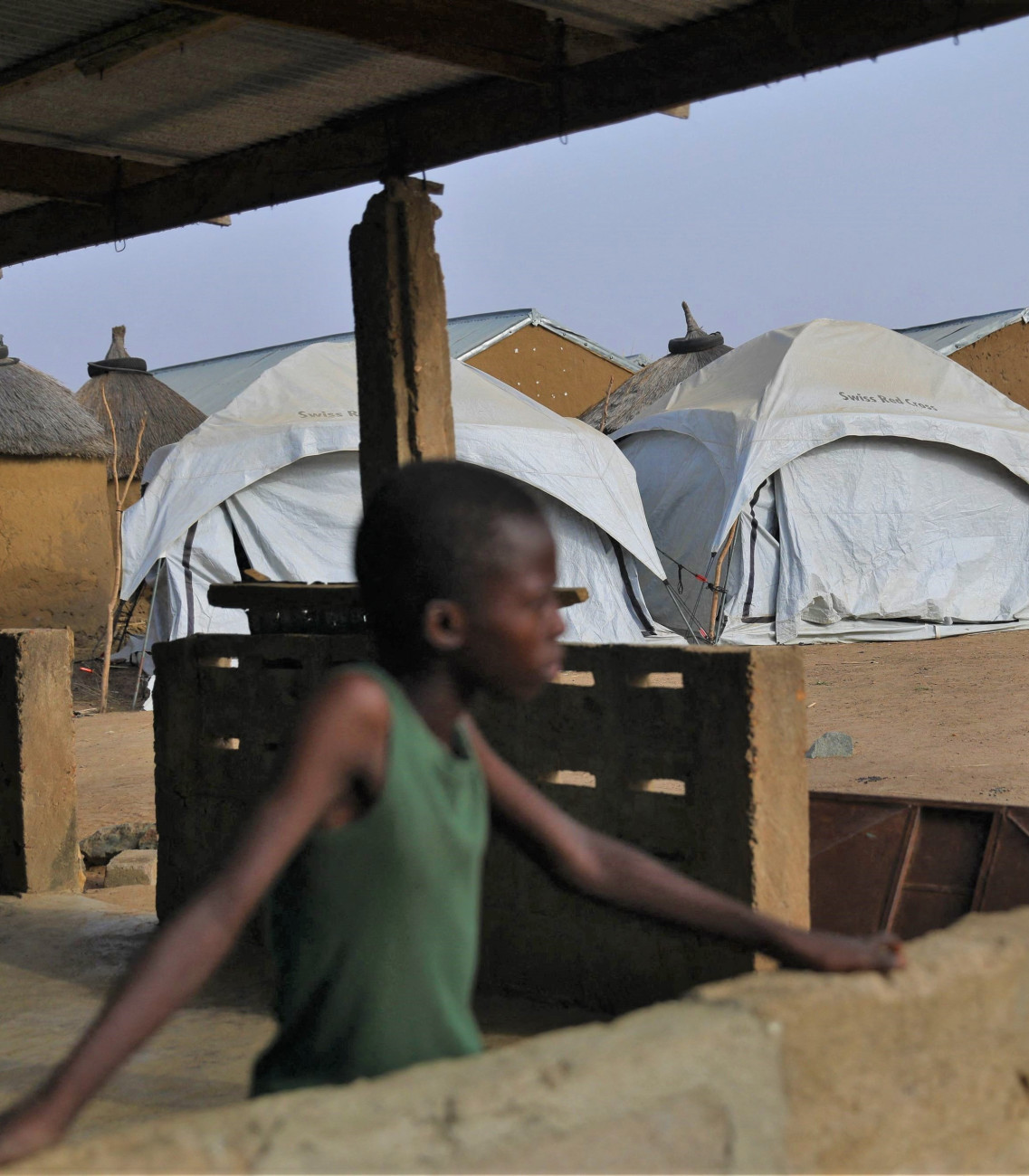
Summary
The Sahel region of West Africa suffers from escalating cycles of violence that have resulted in countless deaths of innocent people. Every month, thousands of children and adults, deprived of all of their belongings, arrive at refugee camps in Mauritania, Burkina Faso, and Nigeria. This worsening situation stems from resentment between communities linked to past rivalries and divisions over access to and management of resources, as well as some communities’ social and political stigmatization. As such inter-communal violence continues to spread, it has come to be one of the most prominent threats to security and socio-political stability in the region.
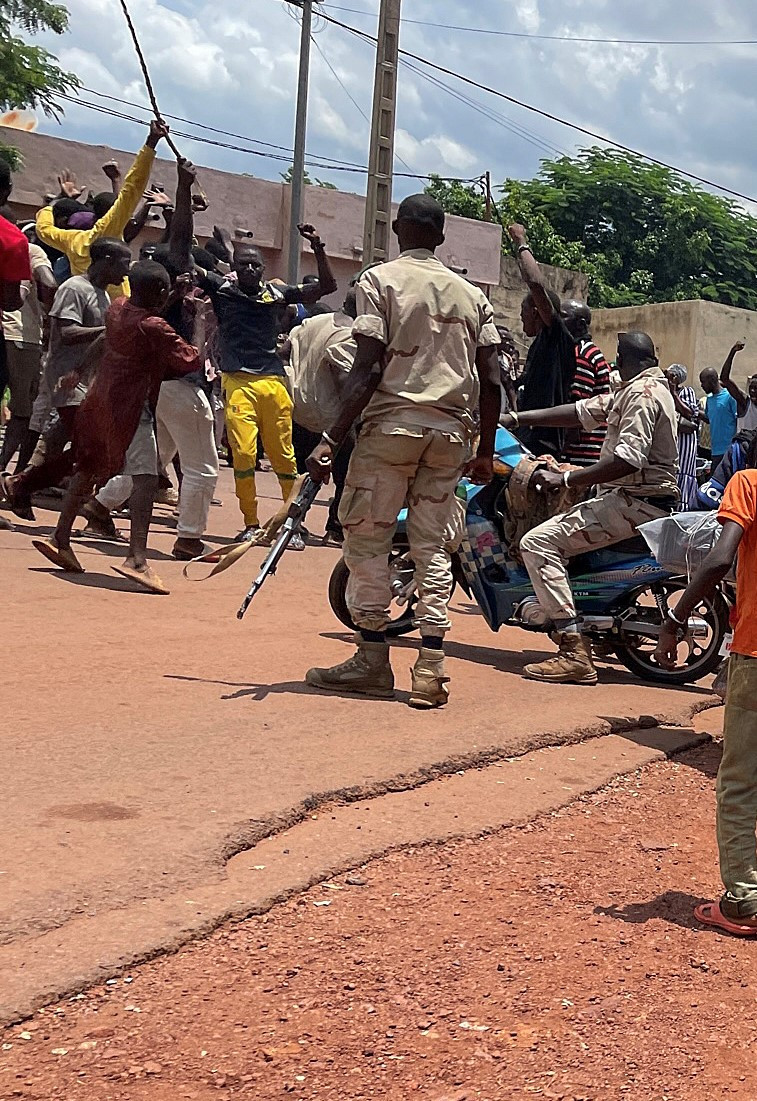
Table of Contents
1. Key Points
3. A Necessary Regional Perspective
4. Inter-Community Tensions: A Historical Source of Violence
5. Dramatic Failures of Counter-Insurgency Responses
6. Counter-Terrorism Responses Contribute to Spreading Terrorism Regionally
7. Political Instrumentalization, Community Exclusion, and Social Violence
8. Conclusion
10. Endnotes
Key Points
- Inter-communal violence in West Africa is escalating, posing a significant threat to the security and stability of the region. The lack of attention from national and international leaders demonstrates a disregard for the short- and long-term multifaceted risks associated with this form of violence.
- Transnational movements and the impact of climate change and desertification on transhumance routes have further exacerbated these tensions, with criminal and terrorist networks exploiting community grievances and rivalries for their own interests.
- While a regional viewpoint provides a comprehensive analysis, it is crucial to acknowledge the complexity and variations within local perspectives. Communities with a regional presence, such as the Fulbe communities living across different countries in the sub-region, are extremely diverse.
- Inter-community tensions in the Sahel region have historical and, notably, colonial roots. They are characterized by divisions, inequalities, and social hierarchies based on clans, castes, and tribes. The discrimination and marginalization of certain communities have fueled violence and conflicts, leading to separatist movements, civil wars, and regional instability.
- The interplay between political claims, exclusionary policies, and community-based violence has created fertile ground for the emergence of security threats, including jihadist groups, exacerbating existing inter-community divisions and perpetuating the cycle of violence.
- Counter-insurgency responses in West Africa have been marked by dramatic failures, with governments relying on community-based militias to combat terrorism and inadvertently exacerbating inter-communal tensions.
- The political instrumentalization of community issues in West Africa, driven by the manipulation of ethnicity for power and exclusionary practices, contributes to inter-community violence and instability, highlighting the need for effective governance and inclusive policies to address these underlying conflicts.
- The unresolved history of inter-communal clashes, coupled with political missteps and the rise of extremist groups, has created a pressing need to address inter-community violence in West Africa. The complexity of the issue requires comprehensive political strategies, including transitional justice mechanisms, social cohesion networks, and broader regional cooperation to heal historical divisions and prevent further violence.
A Pressing Issue
The Sahel region of West Africa suffers from escalating cycles of violence that have resulted in countless deaths of innocent people. Every month, thousands of children and adults, deprived of all of their belongings, arrive at refugee camps in Mauritania, Burkina Faso, and Nigeria.1 This worsening situation stems from resentment between communities linked to past rivalries and divisions over access to and management of resources, as well as some communities’ social and political stigmatization. As such inter-communal violence continues to spread, it has come to be one of the most prominent threats to security and socio-political stability in the region.
The dramatic breakdown in security was already present in 2018, as exemplified by the deadly events in Yirgou in Burkina Faso.2 In Moura, in 2022, over 600 people, mainly civilians, were killed by the Malian army and the Russian private military company Wagner Group, under the premise that, as Fulbes (Fulani), they either were supporters or members of the jihadi group Katiba Macina.3 In late December 2022, an estimated 86 Fulbe villagers were killed in Nouna by a detachment of the Volontaires pour la Défense de la Patrie (VDP), a self-defense formation belonging to the Dozo community.4 Similar events occurred across the Sahel, for instance in Inata and Seytenga (Burkina Faso), Tenenkou and Djenné (Mali), and Tillabéri (Niger).5 Dr. Boubacar Ba, of the Centre for Analysis on Governance and Security in the Sahel, confirms that, since 2017, “militias have been created and are attacking other communities. Community conflicts in central Mali have taken on extremely serious proportions. Community conflicts have evolved, but the situation is particularly worrying because targeted attacks by one community against another are increasing.”6
Given the tragic humanitarian and security situations in Mali and Burkina Faso, national and international leaders need to acknowledge the risks and level of threats associated with inter-community violence in West Africa.7 Despite the call by United Nations Secretary-General António Guterres to acknowledge and address inter-community violence back in February 2021,8 the lack of mediation and political attention toward the issue shows that international actors remain largely oblivious to this danger.
We define inter-community violence, physical and moral, as a form of violence that is the expression of both a form of solidarity and antagonism between two groups delineated across ethnic or, as we prefer to term it, communal lines.9 Inter-community clashes can intersect with other forms of violence, notably religious or political — i.e., the use of violent means and methods, sometimes resorting to terror, in order to achieve either ideological and/or political objectives. However, while terrorist and/or political violence seem to be endless “hot topics” in global news and diplomatic circles, the gravity of inter-community tensions growing in many parts of West Africa, as well as their origins and aggravating factors, continue to be under-scrutinized.
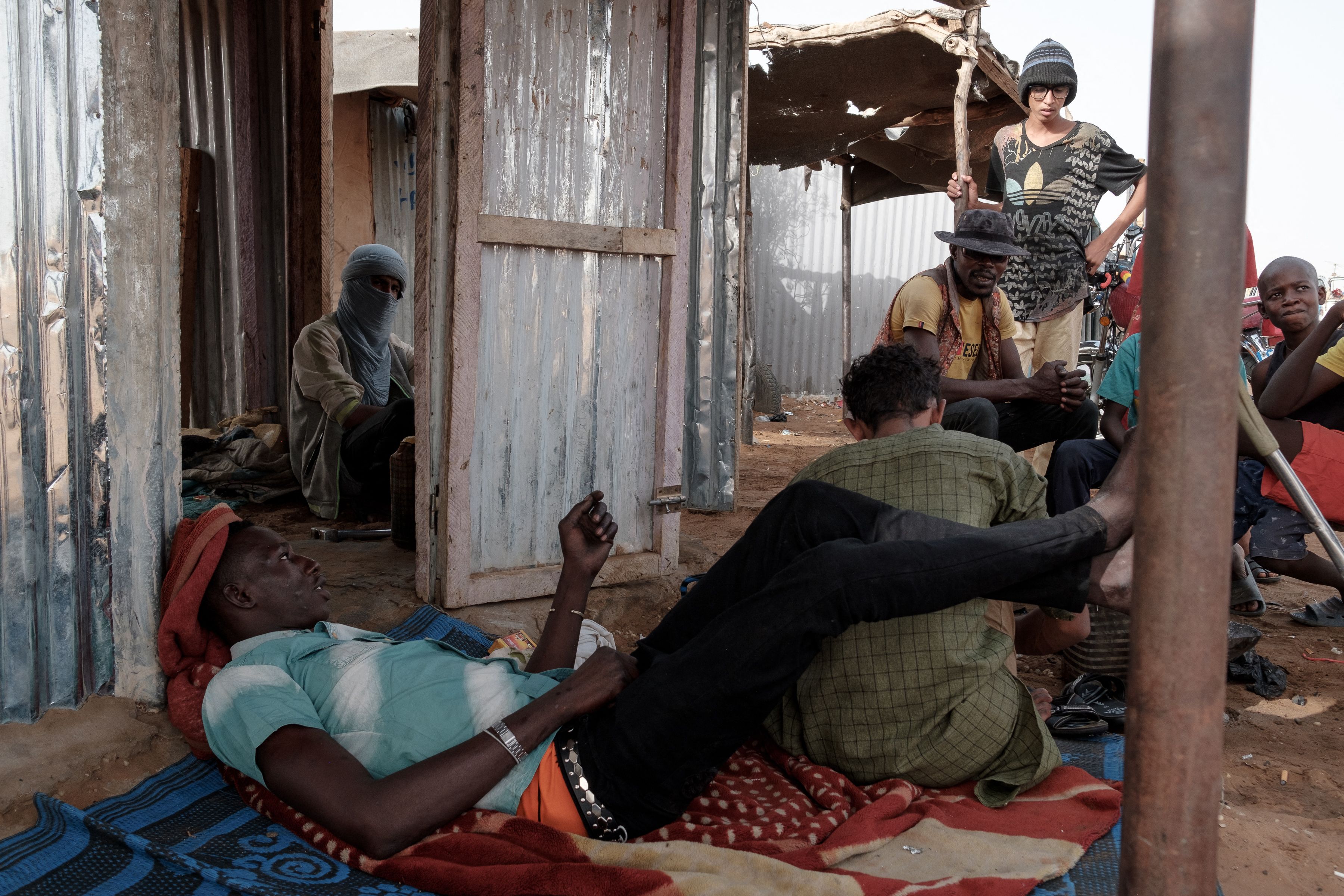
A Necessary Regional Perspective
The adoption of a regional perspective is crucial to understanding the complexities of inter-community tensions in West African countries. This methodological stance draws on historical, social, and political connections, notably linked to the colonial past shared by the countries in the region and the transnational nature of the phenomena in question. In fact, the colonial yoke imposed on the Sahel by French, British, and Portuguese colonizers, coupled with the arbitrary delimitation of national borders regardless of existing systems of government and local communities, severely impacted the development of socio-political cohesion within these artificial perimeters.10 The denial of the “historicity” of ancient governance structures by the colonial powers and the artificial borders they imposed have had lasting consequences to this day. The Yoruba community was, for instance, artificially divided between Benin and Nigeria. Evidence is also extensively provided by the several long-lasting inter-community tensions, separatist claims, and violent civil wars registered throughout the region, marking Nigerian, Ivorian, and Guinean national history to this day.11 The French, Portuguese, and English settlers instrumentalized, and sometimes created, community divisions to reinforce their power over territories, for instance in Casamance (region in southern Senegal).12 These settlers notably sought to divide and conquer, favoring one community over the other.
Transnational movements have also played a crucial role in the region’s history, and community-based conflicts between farmers and nomadic herders across West Africa appear to be worsening and growing increasingly complex.13 Among these nomadic populations, the Muslim Fulbe herder communities have experienced growing marginalization14 across the Sahel due to their non-indigenous origins, land-related claims, and, in the past decade, their alleged affiliation with rising jihadist movements.15 Although the Fulbe groups distributed throughout West Africa do not belong to the same community, they have gradually created some cross-cutting, trans-border solidarity networks to face this pervasive climate of mistrust, which has fostered their identification as a monolithic enemy. For example, the movement Tabital Pulaaku International is promoting intra-Fulbe solidarity. Though less covered in the media, Mandingas, Yorubas, Dozos, and other communities inhabiting various regions in West Africa have also created formal and informal networks of solidarity bypassing national borders.
In our view, it is key to consider that inter-community relations are being seriously affected by conditions affecting the entire region. Climate change and desertification have considerably impacted transhumance routes, which in turn has fueled tensions between communities traditionally involved either in herding or farming activities. Criminal and terrorist networks active at the regional level have also used various Sahel communities’ sympathies, affiliations, and rivalries to further their interests.16 In fact, jihadi groups have developed a regionally applied strategy to exploiting local community grievances, tensions, and rivalries.17 They have also voluntarily fueled these inter-community tensions and turned them to their advantage, presenting themselves as protectors of local communities, especially several Fulbe nomadic groups. This is best exemplified by the creation of the Katiba Macina, whose own name refers to the former Macina Empire,18 and the Diina, which also refers to a glorious past for Fulbe communities, wherein they once ruled over other communities.
However, while adopting a regional viewpoint represents the most thorough analytical option, we do respect and value the detrimental importance of local perspectives while studying inter-communal violence. Alleged reflexes of solidarity associated with the Fulbe community on a regional level is, for instance, a common mistake made by many analysts despite a much more complex reality. James Courtright, a researcher and fellow at the Institute of Current World Affaires, insists upon the fact that:19
It is difficult to make general statements about Fulbe communities across West Africa considering their circumstances are very different in different countries. There are organizations that claim to represent all Fulbe, but I am not aware of a unified regional response to the persecution they face in some countries in the sub-region. While the (utterly false) narrative that Fulbe support jihadists circulates in Mali and Burkina Faso and contributes significantly to their marginalization, this is not the case in Senegal or Guinea.
Inter-Community Tensions: A Historical Source of Violence
The social architecture of most communities in the Sahel is riddled with divisions and inequalities structured around clans, castes, tribes, and, now, increasingly around political leaders. Social tensions, stereotypes, and barriers linked to community affiliations are numerous and sometimes quite discreet to a foreign eye. These are most often legitimized by traditional norms, maintaining rigid hierarchies and status stratifications between social groups. The history of relations between these different segments reflects many internecine wars and rivalries. Some disadvantaged social groups, aspiring to greater equality and social justice, seize upon the contexts and processes at the heart of changes in governance as leverage for renegotiating hierarchical and statutory orders.20
In the 1960s, the rhetorical divide between indigenous groups and settlers became the ground for newborn political parties to build their legitimacy to rule upon.21 Examples of political parties that identify with community-based electoral bases are extensively provided in Guinea and Cote d’Ivoire, where the primarily Malinké Rassemblement du Peuple de Guinée (RPG) and the mainly Akan Parti démocratique de Côte d’Ivoire-Rassemblement démocratique africain (PDCI-RDA) established their early prominence at the expense of “non-indigenous” communities and their political representatives.22 As evidence shows, local ruling parties’ political propaganda increasingly came to rely on inter-community differences and rivalries, emphasizing crystallized ideas on alleged community hierarchies and casting electoral opponents as foreign usurpers and natural enemies. In the 1990s, the PDCI-RDA political discourse embraced the “Ivoirianité” rhetoric, fostering an idea of an Ivorian identity and citizenship shaped according to Akan cultural features. This narrative was intended to specifically marginalize the Fulbes.
Political discourse fostering marginalization often embraced other factors to stress the non-indigenous origins of the stigmatized community. That happened under the regime of Col. Maaouiya Ould Sid’Ahmed Taya in Mauritania, which promoted a climate of intolerance against several non-Arab-speaking communities generally labeled as Afro-Mauritanian, quickly followed by acts of brutal oppression.23 Despite being exposed to increasing discrimination since Mauritanian independence in 1960, Afro-Mauritanians have faced systematic persecution and abuses known as “Passif humanitaire” since the late 1980s. In 1989, the Afro-Mauritanian residents living in the Senegal River Valley were forced out of their villages, expropriated from their lands, and subjected to race-based arrests, widespread slaughters, and massive expulsions from national borders.24 Between October 1990 and February 1991, more than 3,000 Afro-Mauritanians were arrested as alleged putschists, of whom at least 500 were subjected to summary executions or tortured to death.25
The discriminatory rhetorical posture quickly turned into concrete acts of ostracism implemented through segregation policies, large-scale community violence, and systemic repression across the region. These patterns of action have been registered in Cote d’Ivoire, where the exclusion of the Fulbe Rassemblement des Républicains (RDR) from the elections and the non-recognition of their citizenship have aggravated tangible inter-community tensions, paving the way for the 2002 civil conflict. Divisive community rhetoric has also pervaded Guinea, leading to the systematic political and social marginalization and repression of Fulbes. In response to the alleged Fulbe conspiracy against his administration in 1976, the first Guinean president, Sekou Touré, declared war on the Fulbe, enacting discriminatory and violent measures against this community. Among the most violent acts promoted, the creation of Camp Boiro — a concentration camp where thousands of supposed political opponents were imprisoned and subjected to torture, violent killings, and starvation — stands out.26
As regional evidence suggests, political claims nurtured by inter-community tensions do not only affect elections (and vice-versa) but can also degenerate into quests for independence and violent separatist disputes. That happened in Nigeria and Senegal, where independence movements triggered by exclusionary administrations fueled internal disorders for decades. For instance, Nigeria was marred by a brutal civil war between the central government and the separatist Igbo-ruled Republic of Biafra, in the North Delta region. Due to increasing xenophobic resentment against this community and its privileged position inherited from colonial times, the Igbos fell victim to systematic, targeted killings, which were later qualified as pogroms.
In response to these community-based massacres, the Igbo decided to detach from central Nigerian authorities and declare an independent state in 1967, sparking a brutal civil war. After the end of this harsh conflict, despite formal governmental attempts to foster social inclusion, growing resentment led to the resumption of old separatist claims, including a lack of inclusive economic development and of political representation, profound and protracted consequences of a still unhealed wound of inter-community imbalance. Those separatist sentiments have been embraced by a new rebel movement, the Indigenous People of Biafra (IPOB), since 2014. During the last presidential election, in February 2023, a candidate of Igbo origin, Peter Obi, inspired for the first time in recent memory hope among the Igbo community that it might obtain nation-wide representation.27 Dr. Jack Jackson, a researcher at the Federal University Otuoke in Nigeria, and other analysts contacted for this article estimate that the aftermath of the elections as well as Obi’s ostensible defeat in a highly contested result could lead to inter-community violence, especially in Igboland.28
The Senegalese region of Casamance offers a similar scenario. In the last 40 years, this area has been affected by fluctuating yet consistent hostilities between the national authorities and the Mouvement des Forces Démocratiques de Casamance (MFDC), a local independence movement primarily led by members of the Dioula community. Founded in 1982, the MFDC ground its secessionist claims on the political marginalization of the Casamance region, blaming central leaders for having overlooked local community needs, exploiting fertile lands and oil reservoirs, and gaining possession of other resources regardless of local demands. Whether these insurgencies directly originated from community-based claims is debatable, yet the numerous but unsuccessful peace-negotiating attempts have shown how inter-community societal fractures have inevitable political repercussions on national stability. Recent military operations29 by Senegalese forces against MFDC militants demonstrate that this violent insurrection still isn’t resolved.
Long-lasting inter-community divisions and discrimination turning into, often politically motivated, inter-community violence, reverberates at the regional level and has an impact on the stability of the wider Sahel, demonstrating the historical effect of domestic community-based violence on regional stability. It also explains the favorable grounds on which present political failures as well as security threats (both endogenous and exogenous), notably including jihadist groups, have developed, and why and how they have aggravated past inter-community divisions.
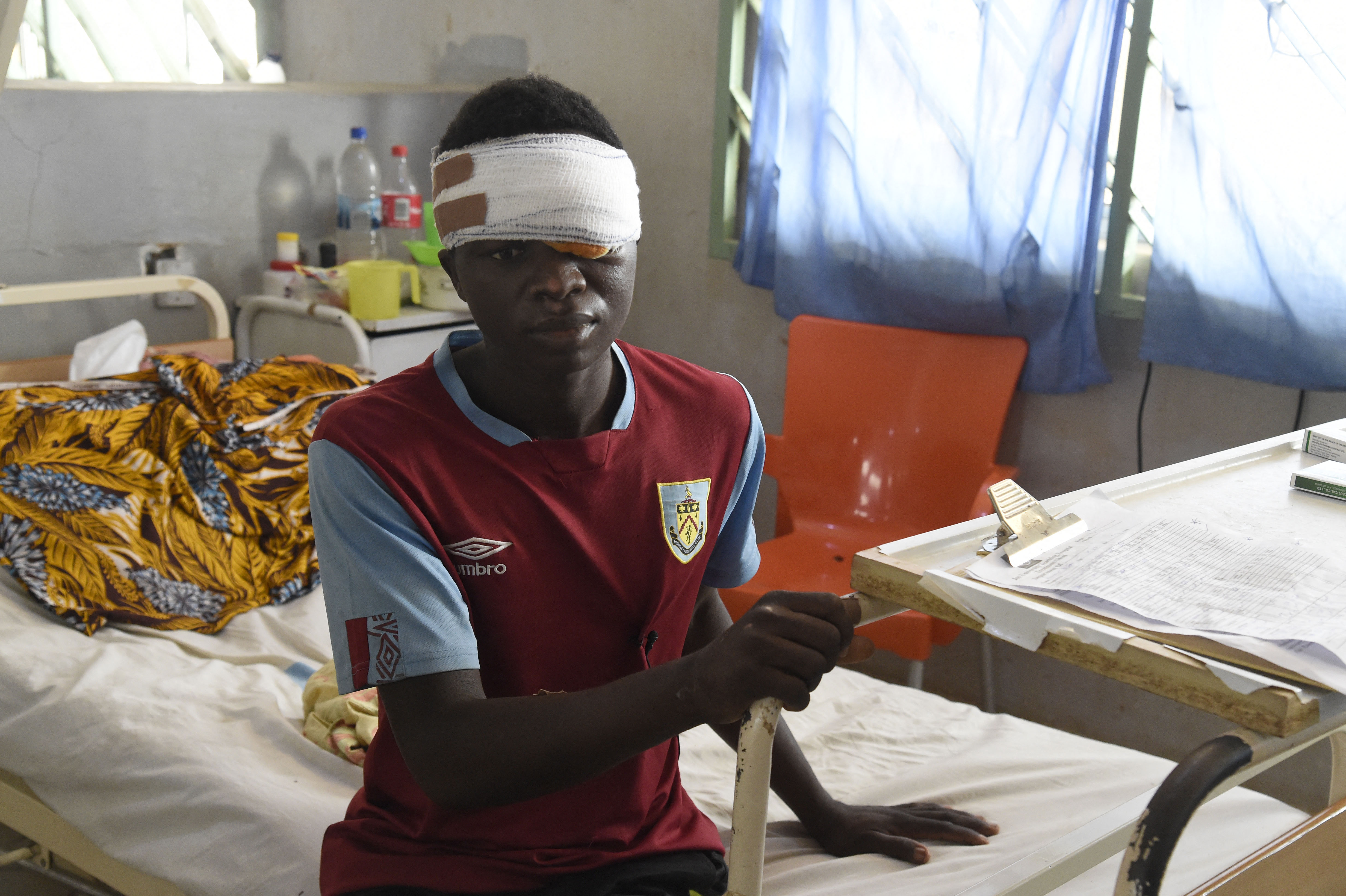
Dramatic Failures of Counter-Insurgency Responses
West African history is replete with records of unsuccessful foreign and local counter-terrorist policies. Notably, in the 1990s and 2000s, the Malian government built and nurtured community-based militias, still active to this day, to fight several Tuareg rebellions in the northern part of the country. The counter-terrorism efforts of recent Malian governments have also relied on community-based militias, but those used their governmental support and connections to reinforce their grasp over criminal flows and to challenge traditional socio-political hierarchies in Northern Mali.30 The dramatic failures of such counter-terrorism initiatives are, today, triggering worrying tensions between communities across West Africa.
Al-Qaeda affiliates and the Islamic State in the Sahel are gaining momentum, consolidating their power in Mali and Burkina Faso while expanding their influence in Nigeria, Benin, Togo, Ghana, and nearing the borders of Guinea and Senegal.31 They tend to exploit inter-community differences to intensify their recruitment process, merging the herder-farmer conflicts with religious extremism and making national and regional security issues even more complex.32 In Mali, the Katiba Macina has strategically exploited inter- and intra-community resentments, playing up pastoralist grievances to drive recruitment.33
Moreover, jihadists have developed and utilize a strong narrative of community protection. In their “governance kit,”34 they offer justice, economic support, and physical protection against external “aggressors,” including states and paramilitary forces. They respond to frustrations and perceptions of injustice connected to the degradation of land, the lack of public services, and predatory practices associated with the state.35 Jihadists restore the rights of certain communities to freely resume their legal and illegal activities. Field research conducted in eastern Burkina Faso shows that the presence of jihadi armed groups, but also of self-defense groups and community-based militias, is often well perceived by populations as it restores security and commercial activities.36
Successive governments and their main international partners37 have frequently fallen back on community-based responses38 as a deterrent measure against terrorism, suffering, in turn, from this problematic strategy’s lasting negative consequences.39 Counter-terrorism policies relying on paramilitary forces raise doubts about the capacity of the state to guarantee and enforce security on its territory. Following the October 2014 coup in Burkina Faso, the state was under intense pressure to restore security in the east and north. The rise of 4,000 self-defense groups named “Koglweogo” or “defenders of the bushland,” comprising approximately 45,000 men,40 has been the direct consequence of the central government’s flawed efforts to guarantee peace and security in several regions.41 Officially fighting crime, Koglweogo also rendered justice, but often arbitrarily. Kogleweogo are mainly associated with the Mossi community in Burkina Faso, and their abuses are creating increasing tensions with other communities.42 In 2020, the Burkinabe state decided to establish the VDP self-defense group in an attempt to regain control over regional self-defense groups.43
By failing to curb these paramilitaries’ disorderly conduct and rising power, governments are forced to succumb to the armed groups’ self-interested criminal practices as well as to their violent and discriminatory acts.44 To this day, the action of VDPs remain largely unchecked and uncontrolled,45 and they are regularly accused of severe abuses against civilians. For instance, Malian Dozo paramilitaries have reportedly redirected the Wagner mercenaries’ military raids against Fulbe villages to exterminate potential terrorist affiliates, leading to arbitrary civilian massacres.46 Supported by different components of the Malian state, the Dogon militia Dan Ambassogou killed and robbed thousands of Fulbe civilians since its creation.47
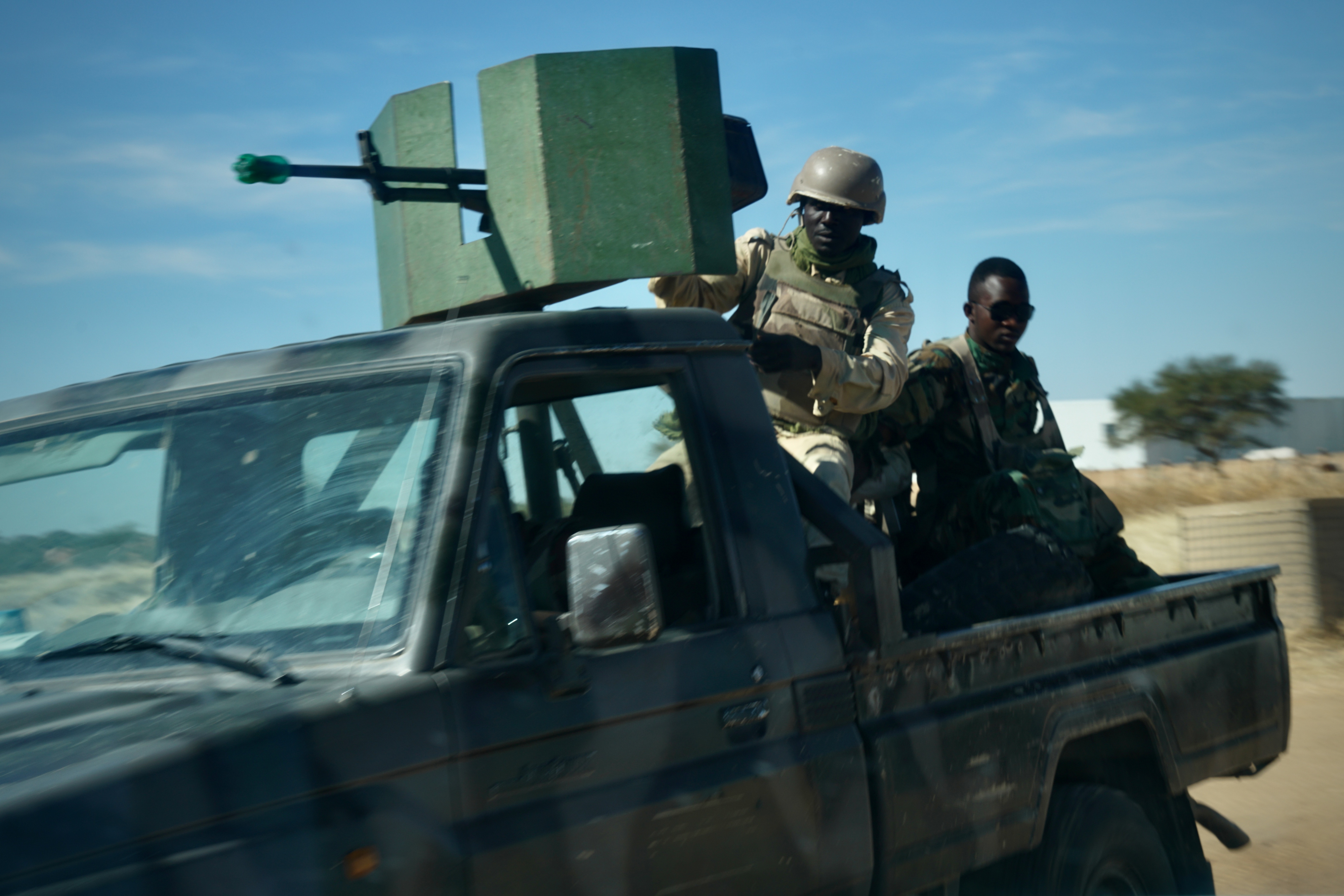
Counter-Terrorism Responses Contribute to Spreading Terrorism Regionally
By targeting specific communities such as Tuaregs and Fulbes as the primary source of jihadist recruitment and as a political threat, local governments themselves fuel inter-community hostilities. At the same time, the rise of state-backed self-defense militias, created to fill national security gaps and eradicate the terrorist threat, has also led to heightened levels of inter-communal violence.48 The instrumentalization of the Fulbe presence among terrorist groups has given rise to questionable generalizations and is only aggravating their potential for recruitment by jihadists.49 Even if the success of this strategy seems quite limited, these discourses have contributed to stigmatizing Fulbe communities as being “pro-terrorists.”50 As an example, the conflict in central Mali may have been grafted onto tensions between “Bambaras” and “Fulbes,” associating Fulbe with “terrorists” and Bambaras with “the Malian state.”51 In the Lake Chad region, too, the Buduma communities are labeled as Boka Haram sympathizers.
In that regard, the situation in Burkina Faso is telling and spilling over to neighboring countries along a similar premise. Today, the eastern region of Burkina Faso bordering Benin, Togo, and Niger is becoming a new focus for sub-regional terrorist expansion. The spread of insurgency or terrorism in Benin and Togo, i.e., beyond the eastern region of Burkina, may be the result of jihadists exploiting the socio-political position of the Fulbe community in these states, particularly Benin, but also Togo and Ghana.52 In these countries, pastoral Fulbe communities are in a situation of notable exclusion and in systematic confrontation with the agricultural and agropastoral communities. Local authorities have generally openly opposed free pastoral movements, which in turn affected Fulbe herders. Indeed, Benin has gone so far as to create a high commission for the sedentarization of pastoralists.53
In the Gulf of Guinea, the authorities seem to be repeating the same mistakes made in the Sahel and could potentially end up with the same dismal consequences.54 This is particularly the case of Togo and Benin,55 which, like Mali and Burkina Faso, have for the most part addressed the jihadist threat in static and narrow terms without considering the overlap between religious, economic, and social factors nor their ranging effects on inter-community balance.56 The Fulbe community was, for instance, targeted by military operations in Northern Togo,57 allegedly by mistake. In Benin, in July 2018, an attack against Fulbe pastoralists resulted in five deaths,58 including those of two children, and the displacement of over 1,500 people.
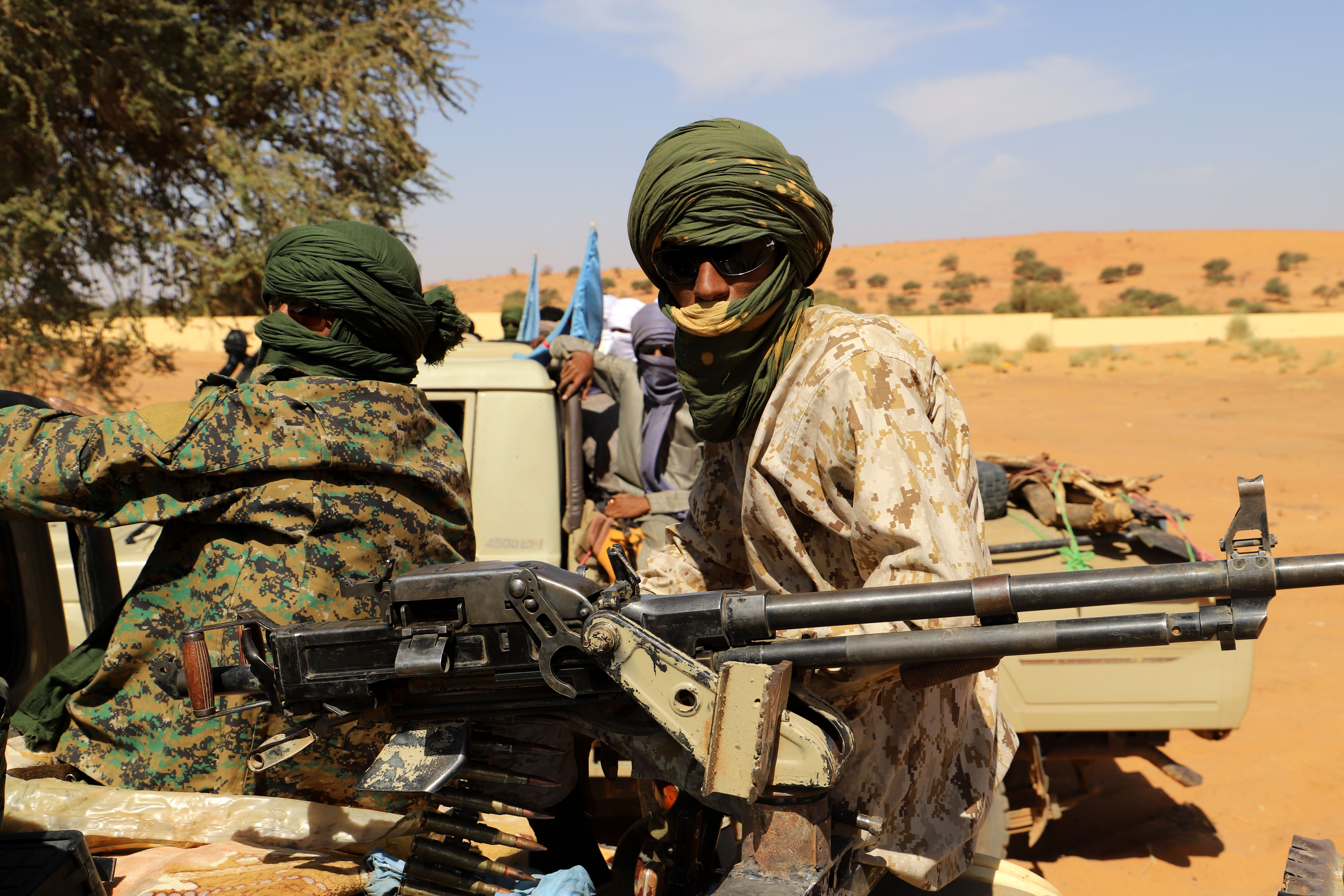
Political Instrumentalization, Community Exclusion, and Social Violence
In addition to counter-insurgency responses, the other critical element generating inter-community violence in West Africa is the political instrumentalization of community issues, employed by the authorities to govern and maintain power.
Although colonial and post-colonial political elites laid the foundations for and fueled these inter-community tensions, national authorities have repeatedly failed to address, monitor, and contain this threat effectively. Jean-Lous Amselle and Elikia M’Bokolo, Director of Studies in Anthropology and History at EHESS, explain that it is not ethnicity per se but the politicization of ethnicity that exacerbates the perception of injustice, lack of recognition, and exclusion behind inter-community conflicts, in addition to other different yet intertwined expressions of such resentment.59 Politics has often used the notion of “community” as an artificial instrument to create and/or consolidate the social — and political — identity of specific groups of people who have been involved (or excluded) from high-ranking government positions and influential socioeconomic roles.
As previously demonstrated, in several West African countries, the state is still perceived by some groups as being monopolized by one dominant community, whether or not that be the majority. And this perception, fed by the often clientelist and nepotistic practices of successive political powers, reinforces, for some, the feeling of exclusion, which in turn leads to demands that can range from a simple sharing of political power to recognition of autonomy or even secession and the creation of an independent state. In most countries in crisis, the notable exclusion of certain communities places them in a logic of systematic confrontation with the authorities. This position of marginality exposes them to being taken over by violent extremist groups. Terrorist groups use them as a breeding ground and exploit these policies of exclusion and persecution of minorities by states. In Ghana, the security consequences of Operation “Cow Leg,”60 carried out regularly by the Ghanaian authorities and intended to drive out of the country foreign Fulbe pastoralists and their herds, ought to be more closely investigated in this light.
Community affiliation also serves as a form of political capital for monopolistic access to power. The Sahel region is replete with examples of politically driven inter-community hostilities exacerbating resentments and claims to power and, in turn, undermining national and regional political stability. For many West African countries, these intertwined tensions often explode around the time of political elections. As a result, ballot results, along with electoral propaganda and domestic turmoil characterizing the pre- and post-voting sessions, have consistently undermined political and social stability in West Africa. Differentiated paths to citizenship and to identity papers have also strongly affected some communities, limiting their capacity to access public services.61 Despite progress made in recent years, Soninke, Wolof, and Fulbe communities in Mauritania have suffered heavily from these discriminatory practices.62
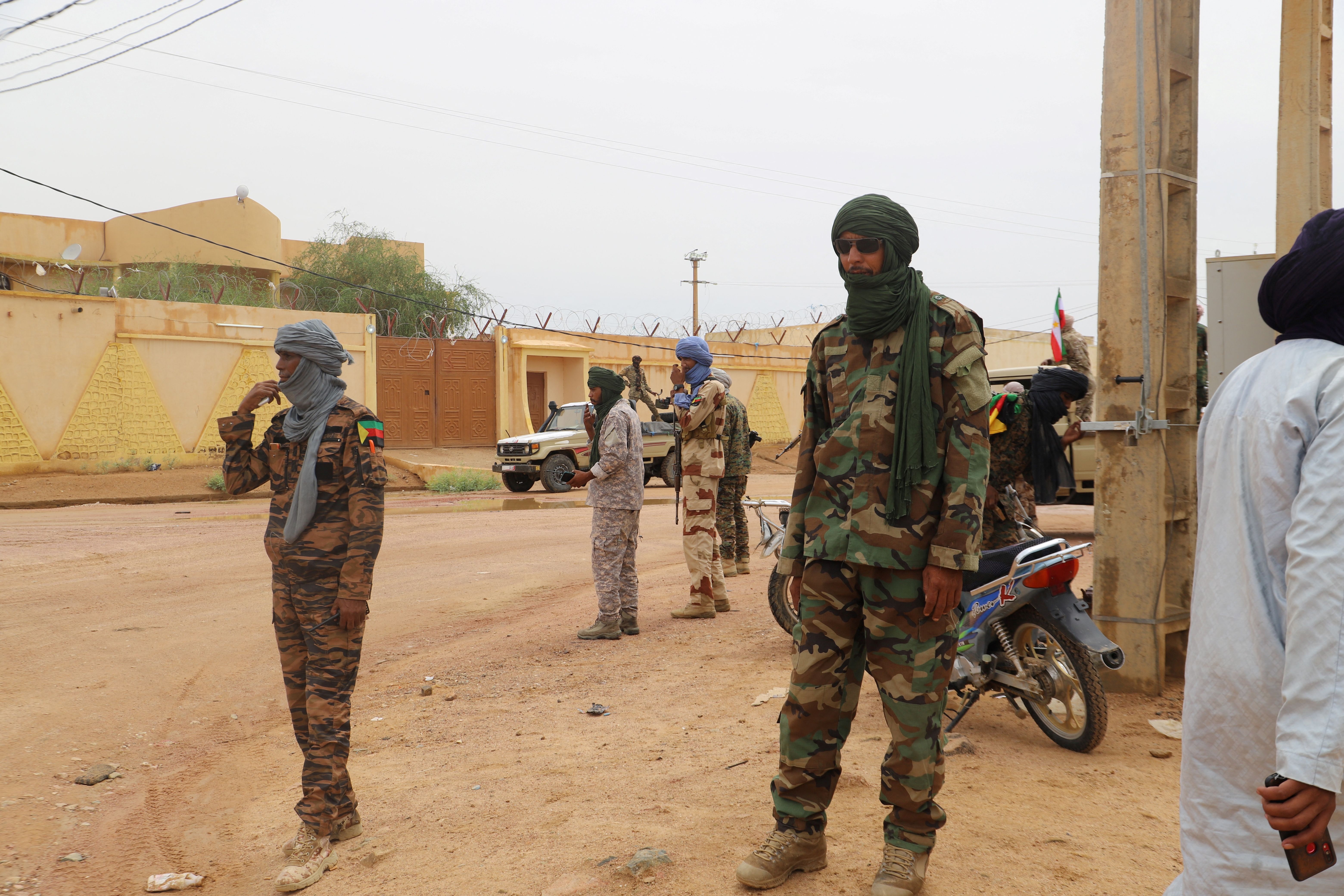
While analyzing political instability connected to community divisions, Guinea and Cote d’Ivoire offer paradigmatic evidence. In the wake of the appointment of the Malinké-supported candidate Alpha Condé as president and in the run-up to the 2013 parliamentary elections, Guinea was marred by inter-community clashes, primarily affecting the Fulbe community.63 Recent events in Guinea indicate that political interests might aggravate further inter-community tensions in the coming years. In Cote d’Ivoire, political hostilities grounded in underlying inter-community friction deeply permeate national socio-political dynamics. In 2011, internal clashes caused the death of at least 3,000 people.64 Investigations showed that a systemic campaign of community-based violence was enforced. Cote d’Ivoire was similarly marked by general discontent and numerous inter-community clashes in the aftermath of the 2020 presidential elections.65
Inter-community violence is also pushing Mali and Burkina Faso to the verge of disaster.66 These two countries have recently experienced widespread community-based hate speech between competing political parties. For instance, online calls for violence against the Fulbe and Tuareg have recurred in Burkina Faso, using their non-indigenous origins and supposed affiliation with jihadism as excuses to ostracize them and promote their “extermination.”67 In Mali, rising inter-community tensions between southern and northern communities could heighten in the coming months and lead to deadly clashes as well as a possible new claim for independence of the Azawad.68
Senegal, however, may represent a telling political nuance in the region. As Dr. Bakary Sambe, the director of the Timbuktu Institute, points out, in the political confrontation in Senegal, “ethnicity” is present, but it is not a determining factor:
There is a form of humility in exposing ethnicity politically in Senegal, both as elements of division and cohesion. Senegalese politicians have integrated the need to be politicians of synthesis and not in any ethnic crystallization that could be manipulated in the political game. This is part of the Senegalese social contract and still a strong consensus.69
The above-cited researcher James Courtright adds, “I am skeptical that upcoming presidential elections in Senegal will trigger communal violence. Support for candidates is usually not based on ethnic ties, and politicians avoid appealing to ethnicity.”70
Conclusion
The unresolved, long history of inter-communal clashes, especially in the colonial and post-colonial eras, combined with political missteps and repeated mistakes related to counter-insurgency tactics against the territorial advances of the West Africa branches of al-Qaeda and the Islamic State toward the Gulf of Guinea, could trigger significant violence between several communities in the region. There is, therefore, an urgency to raise more awareness about this pressing issue.
The growing and mutually reinforcing intersections of historical, political, and security triggers of inter-community violence seem destined to result in long-lasting catastrophes. In his book Making and Unmaking Nations: War, Leadership and Genocide in Modern Africa, Scott Straus, a professor of political science at the University of Berkeley, shows that grievances and traumas associated with inter-community violence can last for generations.71 Straus’ investigations on Rwanda in the post-genocide era demonstrate that the mutually reinforcing intersections between local struggles and political insecurity could lead to historical and social fractures that are difficult to recognize in time and reconcile over time.72
As our article has highlighted, inter-communal violence is just a different expression of a much larger set of intersecting issues rooted in political marginalization, exploitative central governance, climate change, violent actors’ agendas, and economic stagnation in rural areas. Inter-community violence often merges with other drivers of instability, such as rising terrorist movements, rival gangs, land-related hostilities, and religious tensions, exacerbating the general level of internal violence.73 In Nigeria, long-term territorial disputes exist between indigenes and settlers, notably between the Zangon and Kataf communities in the Kaduna State, or between the Hausa-Fulani nomadic shepherds and the Beromn, Anaguta, and Afizere farmer communities in Plateau State.74 This violence is strongly connected to the business interests of local political elites as well as inter-religious tensions.
Nonetheless, drawing on an in-depth reassessment of inter-community violence in West Africa from a regional perspective, this analysis makes clear the pivotal role of politics in creating, exacerbating, and losing control over manipulated societal divisions in all the countries under scrutiny. This peril is incumbent, and its consequent wounds can stay open for centuries, having a prolonged ripple effect on political and social stability both at the national and regional levels.
The problem of inter-community violence in West Africa is becoming more intricate with time, and yet few political efforts toward reconciliation have been attempted so far — and most have been unsuccessful. Instead of promoting robust policies, governments with poor political legitimacy and a loose grip on domestic fractures have limited themselves to timid awareness-raising speeches, calling on their national populations to reconcile. That happened in Burkina Faso in 2022, when the then-ruling authorities severely condemned the spread of community-based hate messages through WhatsApp and Facebook that incited community violence against Fulbes.75 Although acknowledging and rebuking the rhetoric was important, the government failed to effectively deter this plan for mass violence.
In Mali, Tuareg and Fulbe communities are regularly painted as “criminals” and “terrorists”76 on social media and subjected to disinformation campaigns,77 with little to no reaction from the authorities.78 In Ghana too, community-based political parties have abused the term “terrorist” to discredit their opponents and legitimize harsh military responses; they have extensively used social media to promote their violent discourse.79 Hence, we consider the role of social media in the diffusion of violent discourses and in expanding tensions between communities, at a national and a regional scale, to be critical and requiring further investigation.
As politics is often one of the main causes of inter-community violence, the issue needs to be urgently addressed at local, national, and regional political levels.
Despite inconsistent, and often limited, political responses, some good practices aimed at solving inter-community divisions stand out. These positive examples involve creating and enforcing transitional justice mechanisms and social cohesion networks, as happened in Nigeria, Cote d’Ivoire, Western Mali, and Burkina Faso. Local non-governmental stakeholders have been advocating for a paradigm shift in the political response of national central administrations, supporting the adoption of targeted policies to safeguard national stability through intersecting diplomatic, military, and social measures. Grassroots attempts to gather like-minded people under the same national identity rather than community-based identity are found online, such as some Guinean groups on Facebook that advocate for a national unity government treating Malinkés, Fulbe, and Soussou as one and overcoming the present community-centric cleavages.80
Nigeria hosted the so-called Kabara committee, a body established to settle the ongoing farmer-herder violence hampering local stability.81 Drawing on the African tradition of transitional justice mechanisms, the Kabara committee mediated disputes without relying on excessively punitive measures, with the involvement of community stakeholders from traditional and religious leaders, local authorities, and youth and women’s associations.82 Cote d’Ivoire promoted a similar pattern of action, trying to act in advance and preventing instead of reconciling tangible inter-community divisions. In this regard, a specific project to avoid community-based crises and violence and their further exacerbation due to terrorist uprisings was launched in Korhogo in 2022.83
Western Mali and Burkina Faso benefitted from the RECOPA network, a civil society organization intended to bring together local farmers, settled herders, and the municipal government to overcome difficult land tenure obstacles and secure pastoral routes and grazing areas in a peaceful manner. Some other states preferred to establish new institutional bodies, political measures, and legal reforms to deter central marginalization. For instance, the 2019 Mauritanian government adopted some structural measures to balance the scarce presence of Haratins and Afro-Mauritanians compared to Beydan communities within the national institutions, providing the three groups with the same percentage of representatives. Similarly, Ghana established two institutional bodies to smooth community-based tensions: the national electoral commission and the Commission on Human Rights and Administrative Justice (CHRAJ). These two institutions were meant to work as deterrent instruments against community-based cleavages, monitoring acts of violence throughout the country and ensuring regular elections to prevent post-electoral contestation and turmoil.
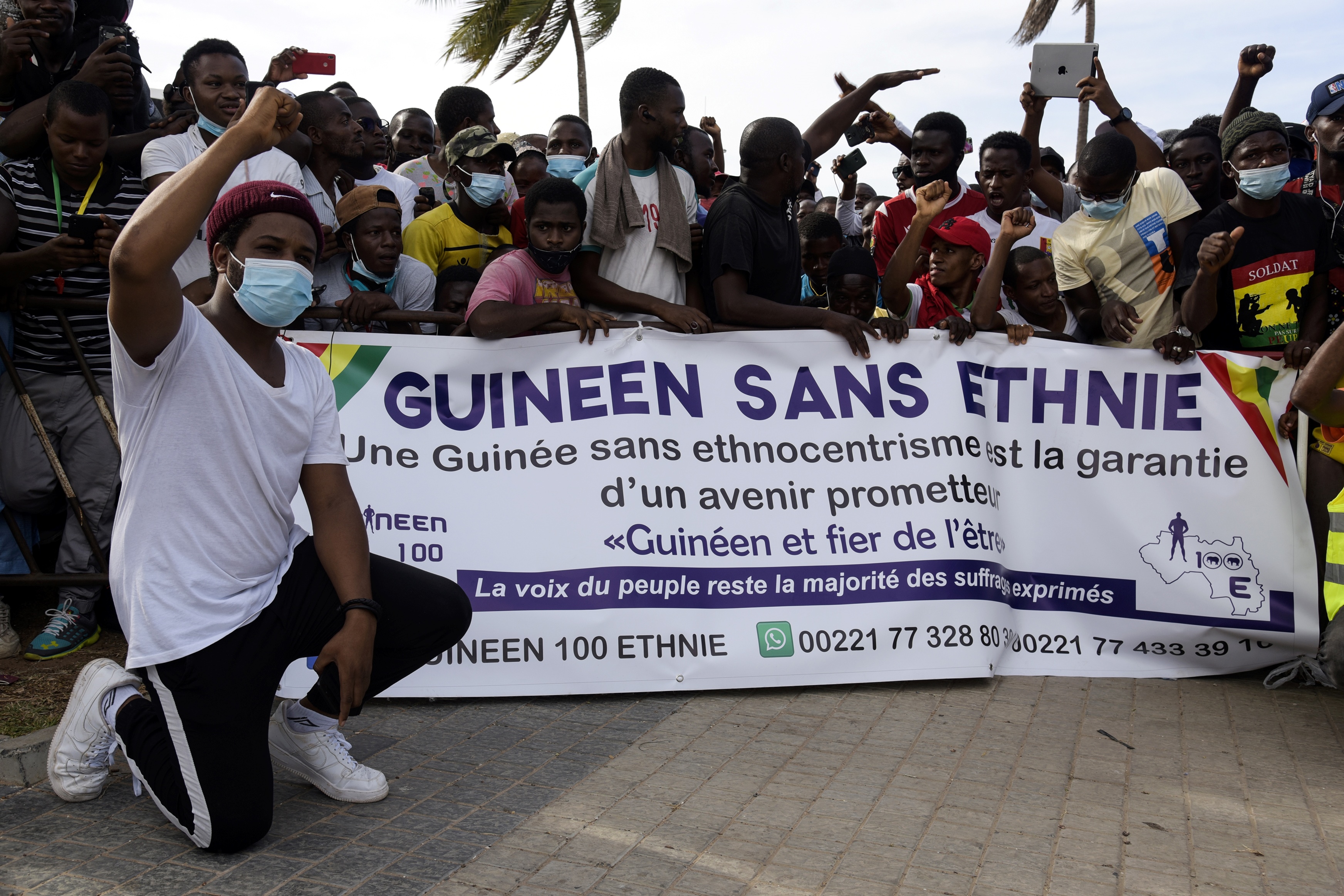
Although these measures have had a beneficial impact, they were all too limited in nature, scope, and means to address and heal inter-community cleavages in a truly comprehensive manner. They often over-rely on traditional authorities; instead, mediation attempts should also embrace a top-down approach and not only a bottom-up perspective, involving political leaders at national levels in the process of reconciliation while establishing a broader push for peace at the local and regional levels. It is key to ensure that political actors do not have a personal interest in triggering further turmoil and fostering ideological reinvention to consolidate their political legitimacy on different grounds. Zooming out from the community perimeter, a more fruitful exchange of de-escalatory and reconciliatory best practices should occur across the region. As Dr. Ba, the director of the Center for Analysis on Governance and Security in the Sahel, pointedly noted:
Regional lessons can be drawn from the situation in Mali: There needs to be an agreement and a global vision of peace, with coherence at a national and local level. For community reconciliation and peace, therefore, there is an absolute need for a national strategy for dialogue that describes the red line of what is and is not acceptable.84
To be more effective, reconciliation efforts between communities should adopt a multi-layered approach that does not only involve high-ranking positions or solely target community members. Different individuals affected by or engaged in various forms of inter-community violence — and possibly those benefiting from the perpetuation of violence — should all become actors of the reconciliation process.
About the Authors
Guillaume Soto-Mayor is a Non-Resident Scholar with MEI’s North Africa and the Sahel Program with an expertise in political violence, security, peace, migration, and governance in West and Central Africa.
Mahamadou Sawadogo is a researcher with an expertise on violent extremism, political violence, and racialization, and the CEO of Granada Consulting.
The authors wish to acknowledge Roberta Maria Aricò for her key support in writing this report.
Endnotes
1 “Pris entre deux feux’ au Mali, les réfugiés affluent en Mauritanie,” VOA, August 25, 2022, https://www.voaafrique.com/a/pris-entre-deux-feux-au-mali-les-r%C3%A9fugi%C3%A9s-affluent-en-mauritanie/6716066.html.
2 “Massacre de Yirgou: des Burkinabè défilent contre les violences ethniques,” RFI, January 13, 2023, https://www.rfi.fr/fr/afrique/20190113-massacre-yirgou-burkinabe-defilent-contre-violences-ethniques.
3 Rémi Carayol, “À Moura, le « carnage indescriptible » de l’armée malienne et de ses alliés russes,” Mediapart, April 5, 2022, https://www.mediapart.fr/journal/international/050422/moura-le-carnage-indescriptible-de-l-armee-malienne-et-de-ses-allies-russes; Human Rights Watch, Mali: Massacre by Army, Foreign Soldiers: 300 civilians, suspects allegedly killed, (April, 5 2022), https://www.hrw.org/news/2022/04/05/mali-massacre-army-foreign-soldiers.
4 “Burkina Faso: Perpetrators of Nouna killings must face justice,” Amnesty International, January 10, 2023, https://www.amnesty.org/en/latest/news/2023/01/burkina-faso-perpetrator….
5 “Niger: éviter l’aggravation des violences contre les civils à Tillabéri,” International Crisis Group, May 28, 2021, https://www.crisisgroup.org/fr/africa/sahel/niger/b172-murder-tillabery-calming-nigers-emerging-communal-crisis.
6 Interview with Boubacar Ba, conducted by Mahamadou Sawadogo and Guillaume Soto-Mayor, March 2023.
7 Danish Immigration Service, Ministry of Immigration and Integration, Brief Report: Country of Origin Information (COI): Violent Extremism in West Africa, (June 2020), https://coi.euaa.europa.eu/administration/denmark/PLib/COI_brief_report_
Violent_Extremism_in_West_Africa_June_2020.pdf.
8 “L’ONU veut un plan pour lutter contre les violences intercommunautaires au Sahel”, VOA, February 4, 2021, https://www.voaafrique.com/a/afrique-de-l-ouest-le-conseil-de-s%C3%A9curit%C3%A9-de-l-onu-veut-lutter-contre-les-violences-intercommunautaires-/5764725.html.
9 Based on Jean-Loup Amselle and Elikia M’Bokolo’s work, we will use the term “community” rather than “ethnicity” in this article, as ethnicity is an artificially created notion that induces a reductive comprehension of both societies and conflicts.
10 Felix Y. T. Longi, “The Kusasi-Mamprusi Conflict in Bawku: A Legacy of British Colonial Policy in Northern Ghana,” Ghana Studies 17, no. 1 (2014): 157-76, https://doi.org/10.1353/ghs.2014.0004.
11 Benjamin Maiangwa and Muhammad Dan Suleiman, “History of Divisive Ethnic Identities Shows It’s Time Nigeria Admits Its Role in Enforcing Them,” The Conversation, February 24, 2021, http://theconversation.com/history-of-divisive-ethnic-identities-shows-its-time-nigeria-admits-its-role-in-enforcing-them-154971.
12 Joël Glasman, “Le Sénégal imaginé. Évolution d’une classification ethnique de 1816 aux années 1920,” Afrique & histoire 2, no. 1 (2004): 111-39, https://doi.org/10.3917/afhi.002.0111.
13 “La complexité croissante des conflits entre agriculteurs et éleveurs en Afrique de l’Ouest et centrale,” Centre d’Études Stratégiques de l’Afrique (blog), August 3, 2021, https://africacenter.org/fr/publication/la-complexite-croissante-des-conflits-entre-agriculteurs-et-eleveurs-en-afrique-de-louest-et-centrale/.
14 Sandrine Blanchard, “Comment endiguer la stigmatisation des Peuls dans le Sahel,” Deutsche Welle, June 24, 2022, https://www.dw.com/fr/stigmatisation-peuls-sahel-mali-burkina-faso/a-62240675.
15 Leif Brottem, “The Growing Complexity of Farmer-Herder Conflict in West and Central Africa,” Africa Center for Strategic Studies, September 2021, https://www.jstor.org/stable/resrep32891.
16 Guillaume Soto-Mayor, “Trafics et trafiquants : éléments structurants des sociétés sahéliennes,” Recherches internationales, n°117, (January 2020) :117-135, https://www.recherches-internationales.fr/RI117/RI117_Soto_Mayor.pdf.
17 Guillaume Soto-Mayor, “Djihadistes en Afrique: des hors-la-loi sans religion ?” Le Grand Continent, May 27, 2022, https://legrandcontinent.eu/fr/2022/05/27/djihadistes-en-afrique-des-ho….
18 “Histoire et héritage de l'empire du Macina,” Blog “Africa4,” Libération, January 26, 2020, https://www.liberation.fr/debats/2020/01/26/histoire-et-heritage-de-l-empire-du-macina_1815949/.
19 Interview with James Courtright, conducted by Mahamadou Sawadogo and Guillaume Soto-Mayor, March 2023.
20 Philippe Hugon, Géopolitique de l’Afrique (Paris: Armand Colin, 2016).
21 Ejikeme Jombo Nwagwu, “Indigenes and Settlers Conflict in Nigeria: A Negation to National Integration and Nation Building,” Mediterranean Journal of Social Sciences 7, no. 4 (6 July 2016): 218.
22 “Guinea. Rapporto COI,” Università degli studi di RomaTre, Dipartimento di Giurisprudenza, Human Rights and Refugee Law Legal Clinic, July 1, 2019, http://protezioneinternazionale.giur.uniroma3.it/wp-content/uploads/2019/07/Rapporto-COI-Guinea-Conakry-1-luglio-2019.pdf.
23 “Rapport Du Rapporteur Spécial Sur Les Droits de l’homme et l’extrême Pauvreté Sur Sa Mission En Mauritanie (A/HRC/35/26/Add.1) – Mauritania,” ReliefWeb, May 5, 2017, https://reliefweb.int/report/mauritania/rapport-du-rapporteur-sp-cial-s….
24 “Mauritanie: l’autre 28 novembre des victimes du «passif humanitaire,” RFI, November 28, 2020, https://www.rfi.fr/fr/afrique/20201128-mauritanie-l-autre-28-novembre-d….
25 “Mauritanie: Campagne de Terreur Avril 1994,” Human Rights Watch, 1994, https://www.hrw.org/legacy/french/reports/mauritania/mauritania.htm.
26 Florence Paravy, “Récits du camp Boiro: du témoignage à l’écriture de l’Histoire,” Études littéraires africaines, no. 26 (2008): 34-41, https://doi.org/10.7202/1035121ar.
27 “What’s at stake in Nigeria’s high-risk elections,” The New Humanitarian, February 23, 2023, https://www.thenewhumanitarian.org/editors-take/2023/02/23/whats-stake-….
28 Interview with Dr. Jack Jackson, conducted by Guillaume Soto-Mayor, March 2023.
29 “Sénégal : nouvelle opération militaire contre la rébellion en Casamance,” Jeune Afrique, March 15, 2022, https://www.jeuneafrique.com/1329000/politique/senegal-nouvelle-operati….
30 Guillaume Soto-Mayor, “Trafics et trafiquants : éléments structurants des sociétés sahéliennes,” Recherches internationales, n°117, (January 2020): 117-135, https://www.recherches-internationales.fr/RI117/RI117_Soto_Mayor.pdf.
31 “Bénin : la violence djihadiste se propage en Afrique de l’Ouest,” Africanews, December 18, 2022, https://fr.africanews.com/2022/12/28/benin-la-violence-djihadiste-se-propage-en-afrique-de-louest/; Promediation, “The Jihadist Threat in Northern Ghana and Togo: Stocktaking and Prospects for Containing the Expansion,” Konrad Adenauer Stiftung, March 2022, https://www.kas.de/documents/261825/16928652/The+jihadist+threat+in+nor….
32 Hamza Cherbib, “Jihadism in the Sahel: Exploiting Local Disorders. European Institute of the Mediterranean,” IEMED, 2018, https://www.iemed.org/publication/jihadism-in-the-sahel-exploiting-loca….
33 Leif Brottem, La complexité croissante des conflits entre agriculteurs et éleveurs en Afrique de l’Ouest et centrale, Centre d’Études Stratégiques de l’Afrique, August 3 2021, https://africacenter.org/fr/publication/la-complexite-croissante-des-co….
34 Celian Macé, “Dans l’est du Burkina Faso, un nouveau foyer pour le jihad?” Libération, December 3, 2018, https://www.liberation.fr/planete/2018/12/03/dans-l-est-du-burkina-faso….
35 Guillaume Soto-Mayor, “Djihadistes en Afrique: des hors-la-loi sans religion?” Le Grand Continent, May 27, 2022, https://legrandcontinent.eu/fr/2022/05/27/djihadistes-en-afrique-des-ho….
36 Field interviews conducted by Granada Consulting, Loboubou, Burkina Faso, December 2018.
37 Matthieu Pellerin, Les groupes d’autodéfense, pompiers pyromanes du Sahel, Notes de l’Ifri, December 2022, https://www.ifri.org/fr/publications/notes-de-lifri/groupes-dautodefens….
38Ibid.
39 Rémi Carayol, Le Mirage Sahélien: la France en Afrique, Serval, Barkhane et après? (Paris ; Editions la Découverte, January 2023).
40 Field research conducted by Granada Consulting since 2018.
41 Michel Luntumbue, “Comprendre la dynamique des conflits: Une lecture synthétique des facteurs de conflits en Afrique de l’Ouest,” Note d’Analyse du GRIP, January 14, 2014, https://www.grip.org/comprendre-la-dynamique-des-conflits-une-lecture-s….
42 Cited in the thematic report of the Centre national pour la coordination du mécanisme d’alerte précoce et de réponse sur les initiatives locales de sécurité et les enjeux sécuritaires au Burkina Faso, April 2018.
43 Loi N°002-2020/AN du 21/01/2020 portant institution de volontaires pour la défense de la patrie, Government of Burkina Faso, January 2020.
44 Marie Cold-Ravnkilde and Boubacar Ba, “Actors and Drivers of Conflict in the Sahel,” Danish Institute for International Studies, May 2022, https://www.diis.dk/en/research/actors-and-drivers-of-conflict-in-the-s….
45 “Burkina Faso: Events of 2021,” Human Rights Watch, 2022, https://www.hrw.org/world-report/2022/country-chapters/burkina-faso.
46 Wassim Nasr, “How the Wagner Group is Aggravating the Jihadi Threat in the Sahel,” CTC Sentinel 15, n°11 (November/December 2022), https://ctc.westpoint.edu/how-the-wagner-group-is-aggravating-the-jihad….
47 Pascal Priestley, “Au Mali, l’alarmante multiplication des tueries intercommunautaires,” TV5Monde, https://information.tv5monde.com/afrique/au-mali-l-alarmante-multiplica….
48 Modibo Ghaly Cissé, “Understanding Fulani Perspectives on the Sahel Crisis,” Africa Center for Strategic Studies, April 2020, https://africacenter.org/spotlight/understanding-fulani-perspectives-sahel-crisis/.
49 Luca Raineri, “Explaining the Rise of Jihadism in Africa: The Crucial Case of the Islamic State of the Greater Sahara,” Terrorism and Political Violence 34, no. 8 (17 November 2022): 1632–46, DOI: 10.1080/09546553.2020.1828078.
50 Natasja Rupeshinghe and Morten Boas, “Local drivers of violent extremism in Central Mali,” UNDP and NUPI, 2019, https://www.nupi.no/en/publications/cristin-pub/local-drivers-of-violen….
51 Tor A. Benjamisen and Boubacar Ba, “Why do pastoralists in Mali join jihadist group? A political ecological explanation,” The Journal of Peasant Studies 1, no. 46 (2019): 1-20, DOI: 10.1080/03066150.2018.1474457.
52 Kaderi Noagah Bukari and Nicholaus Schareika, “Stereotypes, prejudices and exclusion of Fulani pastoralists in Ghana,” Pastoralism 5, no. 24 (2015), https://doi.org/10.1186/s13570-015-0046-5.
53 “Le Bénin veut sédentariser ses éleveurs,” Commodafrica, June 17, 2021, http://www.commodafrica.com/17-06-2021-le-benin-veut-sedentariser-ses-e….
54 Hamza Cherbib. “Jihadism in the Sahel: Exploiting Local Disorders,” European Institute of the Mediterranean, 2018, https://www.iemed.org/publication/jihadism-in-the-sahel-exploiting-loca….
55 “Bénin : la violence djihadiste se propage en Afrique de l’Ouest,” Africanews, December 18, 2022, https://fr.africanews.com/2022/12/28/benin-la-violence-djihadiste-se-propage-en-afrique-de-louest/.
56 Promediation, “The Jihadist Threat in Northern Ghana and Togo: Stocktaking and Prospects for Containing the Expansion,” Konrad Adenauer Stiftung, March 2022. https://www.kas.de/documents/261825/16928652/The+jihadist+threat+in+nor….
57 “L’armée togolaise reconnaît avoir tué sept civils par erreur près du Burkina Faso,” France 24, July 15, 2022, https://www.france24.com/fr/afrique/20220714-l-arm%C3%A9e-togolaise-rec….
58 Flore Nobime, “Enquête/conflits communautaires à Cobly : quand la terre divise,” L’évènement précis, October 14, 2019, https://levenementprecis.com/2019/10/14/enquete-conflits-communautaires….
59 Jean-Loup Amselle and Elikia M’Bokolo, Au coeur de l’ethnie : ethnies, tribalisme et Etat en Afrique (Paris: la Découverte Poche, 1999, re-edition).
60 Andreas Kamasah, “Officers withdraw from Operation Cow Leg as Fulani herdsmen threaten to kill them,” Pulse, January 19, 2022, https://www.pulse.com.gh/news/local/officers-withdraw-from-operation-co….
61 Marion Fresia. “Les enjeux politiques et identitaires du retour des réfugiés en Mauritanie : vers une difficile « réconciliation nationale » ?” Politique Africaine 2, no. 114 (2009): 44-66, https://www.cairn.info/revue-politique-africaine-2009-2-page-44.htm.
62 “2021 Country Report on Human Rights Practices: Mauretania,” U.S. Department of State, April 12, 2022, https://www.state.gov/reports/2021-country-reports-on-human-rights-prac….
63 Saliou Samb, “Rival Political Supporters Clash in Guinea,” Reuters, September 21, 2012, https://www.reuters.com/article/us-guinea-clashes-idUSBRE88K0PI20120921; “COI Query: Conflicts between the Malinke and Peul in Conakry,” European Asylum Support Office, September 27, 2018, https://coi.euaa.europa.eu/administration/easo/PLib/GIN_Q116.pdf; Saliou Samb, “EU Observers Say Guinea Vote Valid; Opposition Protests,” Reuters, October 14, 2015, https://www.reuters.com/article/ozatp-uk-guinea-election-idAFKCN0S80J92….
64 Amnesty International, “Côte d’Ivoire: Une suite de crimes impunis,” February 27, 2023, http://web.amnesty.org/library/Index/FRAAFR310072003.
65 “Côte d’ivoire: après les violences électorales de 2020, des opposants toujours poursuivis,” TV5Monde, December 28, 2021, https://information.tv5monde.com/afrique/cote-divoire-apres-les-violenc….
66 “Rapporto COI: Nigeria,” Università degli studi di RomaTre, Dipartimento di Giurisprudenza, Human Rights and Refugee Law Legal Clinic, January 28, 2019, http://protezioneinternazionale.giur.uniroma3.it/wp-content/uploads/201….
67 “How Not to Lose the Sahel: Community Perspectives on Insecurity and International Interventions in Mali, Niger and Burkina Faso,” Saferworld, February 2022, https://www.saferworld.org.uk/resources/publications/1385-how-not-to-lo….
68 Manon Laplace, “Mali : ce que la fusion des mouvements de l’Azawad va changer,” Jeune Afrique, February 9, 2023, https://www.jeuneafrique.com/1416229/politique/mali-les-mouvements-de-l….
69 Interview with Dr. Bakary Sambe, conducted by Mahamadou Sawadogo and Guillaume Soto-Mayor, March 2023.
70 Interview with James Courtright, conducted by Guillaume Soto-Mayor, March 2023.
71 Scott Straus, Making and Unmaking Nations: War, Leadership and Genocide in modern Africa, (Ithaca: Cornell University Press, 2015).
72Ibid.
73 Ejikeme Jombo Nwagwu, “Indigenes and Settlers Conflict in Nigeria: A Negation to National Integration and Nation Building,” Mediterranean Journal of Social Sciences 7, no. 4 (6 July 2016): 218.
74 Alfred Olufemi, “Horrors on the Plateau: Inside Nigeria’s Farmer-Herder Conflict,” Al Jazeera, November 28, 2021, https://www.aljazeera.com/features/2021/11/28/horrors-on-the-plateau-in…; “Rapporto COI: Nigeria,” Università degli studi di RomaTre, Dipartimento di Giurisprudenza, Human Rights and Refugee Law Legal Clinic, January 28, 2019, http://protezioneinternazionale.giur.uniroma3.it/wp-content/uploads/201….
75 “Burkina Faso Condemns “ethnic Cleansing” Messages Circulating on WhatsApp,’” Le Monde, August 18, 2022, https://www.lemonde.fr/en/le-monde-africa/article/2022/08/18/burkina-faso-condemns-ethnic-cleansing-messages-circulating-on-whatsapp_5994006_124.html.
76 “Des discours insensés et haineux à l'endroit de toute une communauté,” @PINAL Facebook Page, January 24, 2020, https://www.facebook.com/peacesahel/photos/a.954353848051051/1521888871….
77 Faysal Arnold Boukary, Dieynaba Thombane, and Coumba Sylla, “Ces photos ne sont pas liées à la tuerie de civils commise le 20 avril 2023 dans le village de Karma dans le nord du Burkina Faso,” Africa Check, May 29, 2023, https://africacheck.org/fr/fact-checks/meta-programme-fact-checks/Burki….
78 “Burkina Faso: le jeune Arnaud Azael Odg à la Maco pour avoir demandé un génocide contre les peulhs,” NetAfrique.net, June 2, 2020, https://netafrique.net/burkina-faso-le-jeune-arnaud-azael-odg-a-la-maco-pour-avoir-demande-un-genocide-contre-les-peulhs/; “Attention à cette fausse lettre ouverte attribuée au mouvement « Yerewolo débout sur les remparts »,” @Facebook Group Tabalé Kunkan, February 26, 2023, https://www.facebook.com/tabalekunkan/posts/201194925829061.
79 James Courtright, “A Small Town in Ghana Erupted in Violence. Were Jihadists Fueling the Fight?” New Lines Magazine (blog), January 25, 2023, https://newlinesmag.com/reportage/a-small-town-in-ghana-erupted-in-violence-were-jihadists-fueling-the-fight.
80 Facebook Group, @Je suis PEULH, SOUSSOU, MALINKÉ, FORESTIER... #JeSuisGUINÉEN!!!, https://www.facebook.com/groups/412588385529961; Facebook Group, @Mouvement Haali-poular pour le soutien du RPG arc-en-ciel, https://www.facebook.com/groups/738443540069532.
81 Alfred Olufemi, “Horrors on the Plateau: Inside Nigeria’s Farmer-Herder Conflict,” Al-Jazeera, November 28, 2021, https://www.aljazeera.com/features/2021/11/28/horrors-on-the-plateau-inside-nigerias-farmer-herder-conflict.
82 Kabiru R. Anwar, “How I Use Traditional Methods to Resolve Disputes in My Community,” Daily Trust, October 1, 2022, https://dailytrust.com/how-i-use-traditional-methods-to-resolve-disputes-in-my-community/.
83 “Lancement à Korhogo d’un projet de prévention des crises et des violences communautaires,” Agence Ivoirienne de Presse de Côte d’Ivoire, June 28, 2022, https://www.aip.ci/cote-divoire-aip-lancement-a-korhogo-dun-projet-de-p….
84 Interview with Boubacar Ba, conducted by Mahamadou Sawadogo and Guillaume Soto-Mayor, March 2023.
Additional Photos
Main photo: A view of refugee tents at Issakateng-Bausi, in Bawku, northern Ghana, on Dec. 7, 2022. Photo by NIPAH DENNIS/AFP via Getty Images.
Contents photo: A crowd gathers around a man (not seen) suspected of taking part in thwarted “terrorist” attack after being beaten by a crowd, in front of the military base in Kati, Mali, on July 22, 2022. Photo by AFP via Getty Images.
The Middle East Institute (MEI) is an independent, non-partisan, non-for-profit, educational organization. It does not engage in advocacy and its scholars’ opinions are their own. MEI welcomes financial donations, but retains sole editorial control over its work and its publications reflect only the authors’ views. For a listing of MEI donors, please click here.











